Content and objectives |
Main tasks |
Part 1: Module introduction & goal setting |
Values & Attitudes:
- Understand the aims, design and content of their school-based NSS Short Stories Elective module
- Understand how this school-based program will help them acquire skills needed in SBA and the HKDSE papers in reading, speaking and writing
- Develop self-monitoring and self-help strategies to achieve the learning objectives of the module
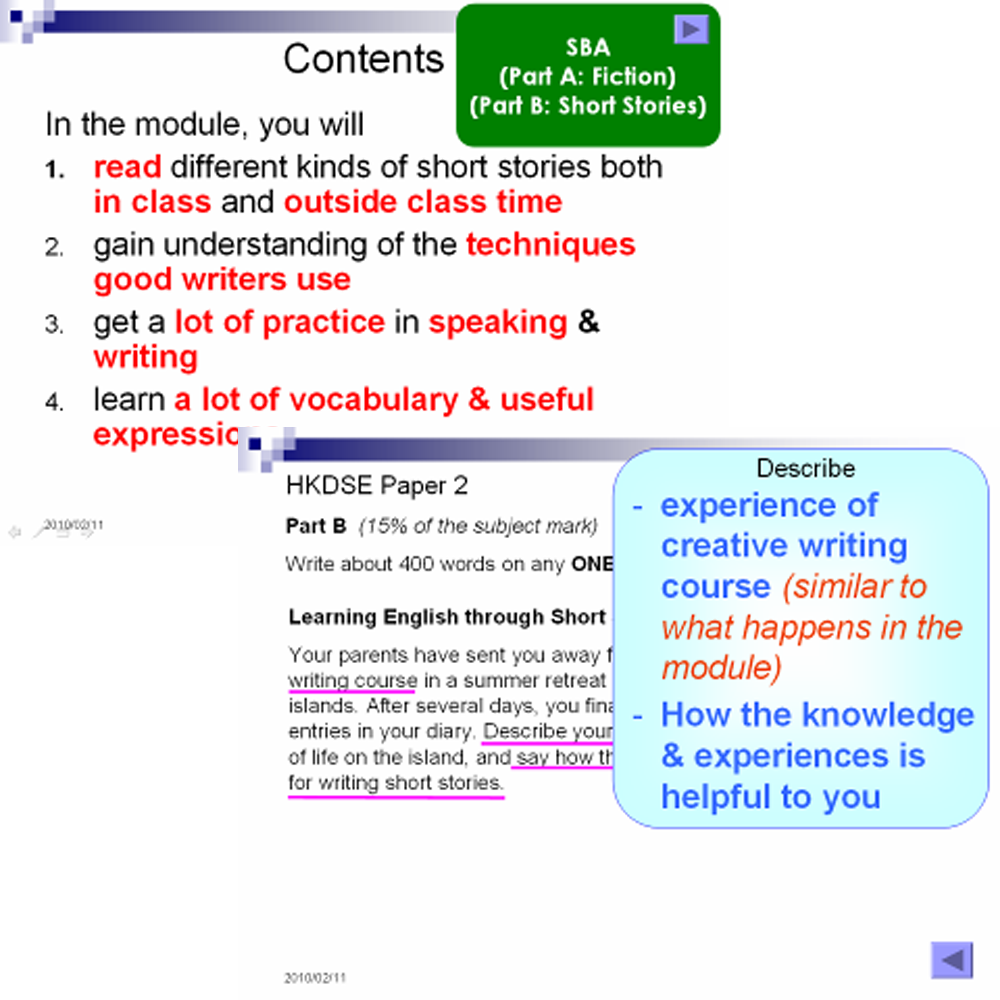
|
Students completed and shared their learning contract about the actions they planned to take to help themselves achieve the learning objectives of the module.
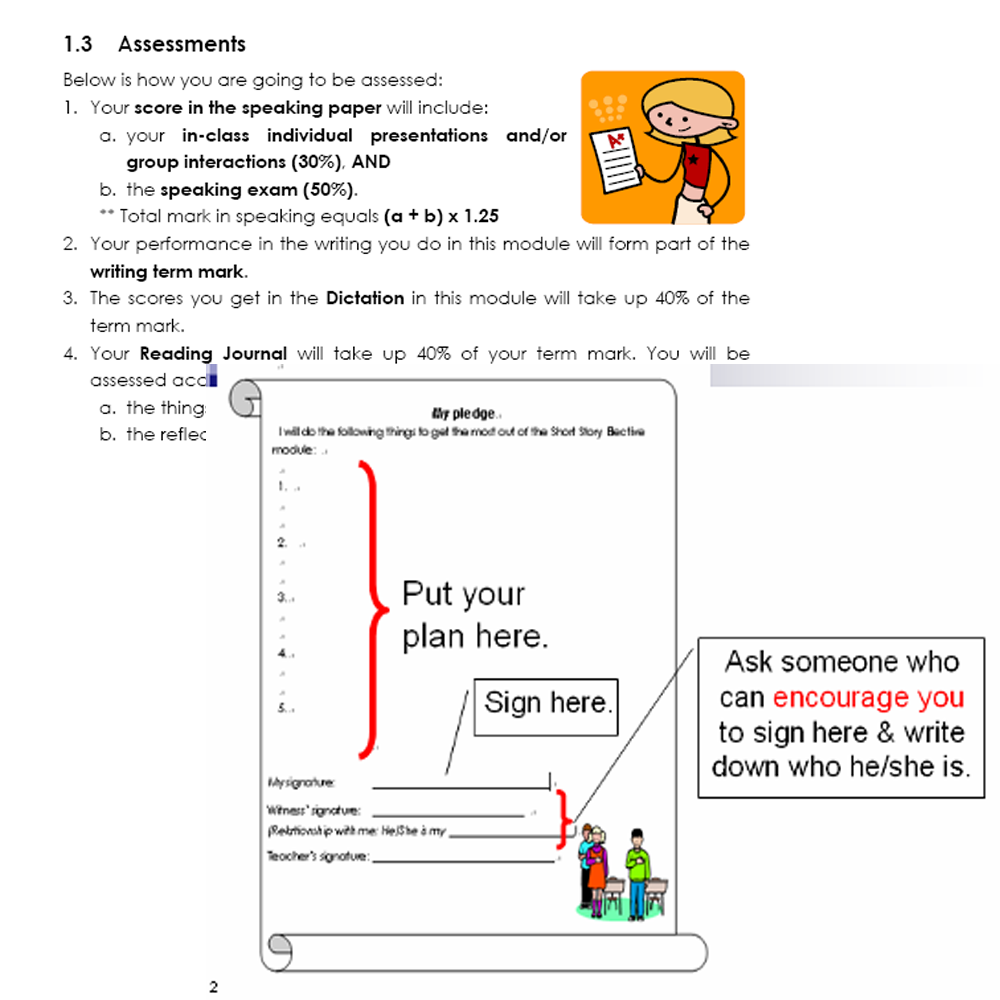
|
Part 2: Different story types & extensive reading skills |
Short stories & SBA/Speaking:
- Identify genres of print/non-print fiction
- Share experiences & preferences in reading
- Provide supporting reasons for an opinion
- Use appropriate signposting to introduce reasons and give examples
- Improve communication strategies (e.g. eye-contact, loud & clear voice)
Vocabulary:
- Name different story types
- Describe feelings about a story/book using adjectives and phrases
Extensive reading:
- Locate information from different parts of books to make informed book choice
- Choose a book of appropriate interest & reading level for independent reading
Attitude:
- Develop a reading habit
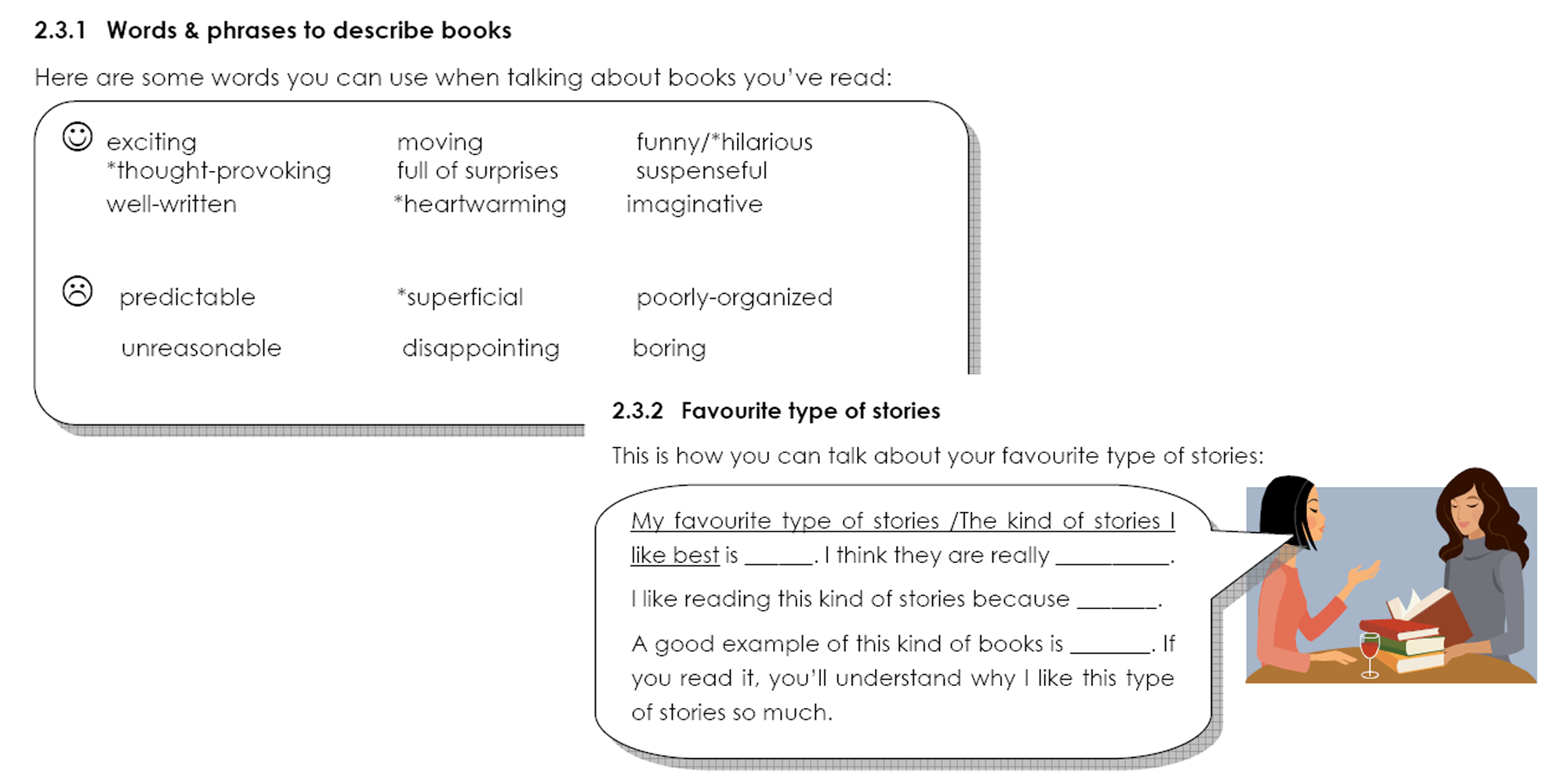
|
Students chose a book from the library and conducted a presentation to explain the features and reasons that made it attractive to them.
|
|
|
Teacher introducing strategies for students to choose the right books for themselves |
|
|
|
A student introducing a fiction to their peers in class |
|
Part 3: Short stories appreciation and understanding key features: Traditional & fractured fairy tales |
Reading:
- Identify keywords to help make predictions
- Make use of prior knowledge in predicting the plot
- Infer word meaning from context
SBA/Speaking:
- Start and end a discussion with appropriate formulaic expressions
- Participate in and initiate interaction by making suggestions, supporting and developing others’ views, disagreeing and offering alternatives
- Sustain and extend a conversational exchange
Short stories:
- Identify:
- the setting & characters of stories
- common features in fairy tales
- points of view & their impact on a story
- Write a short story with:
- an awareness of the plot elements & the impact the point of view chosen has on it
- a twist to surprise the readers
Vocabulary:
- Name the key elements in stories
- Suggest common settings & characters in fairy tales
|
Students presented and wrote their group’s fractured fairy tale from the point of view of a character in their story.
|
Teacher drawing students’ focus on using keywords to help make predictions |
|
A student presenting her group’s fractured fairy tale |
|
|
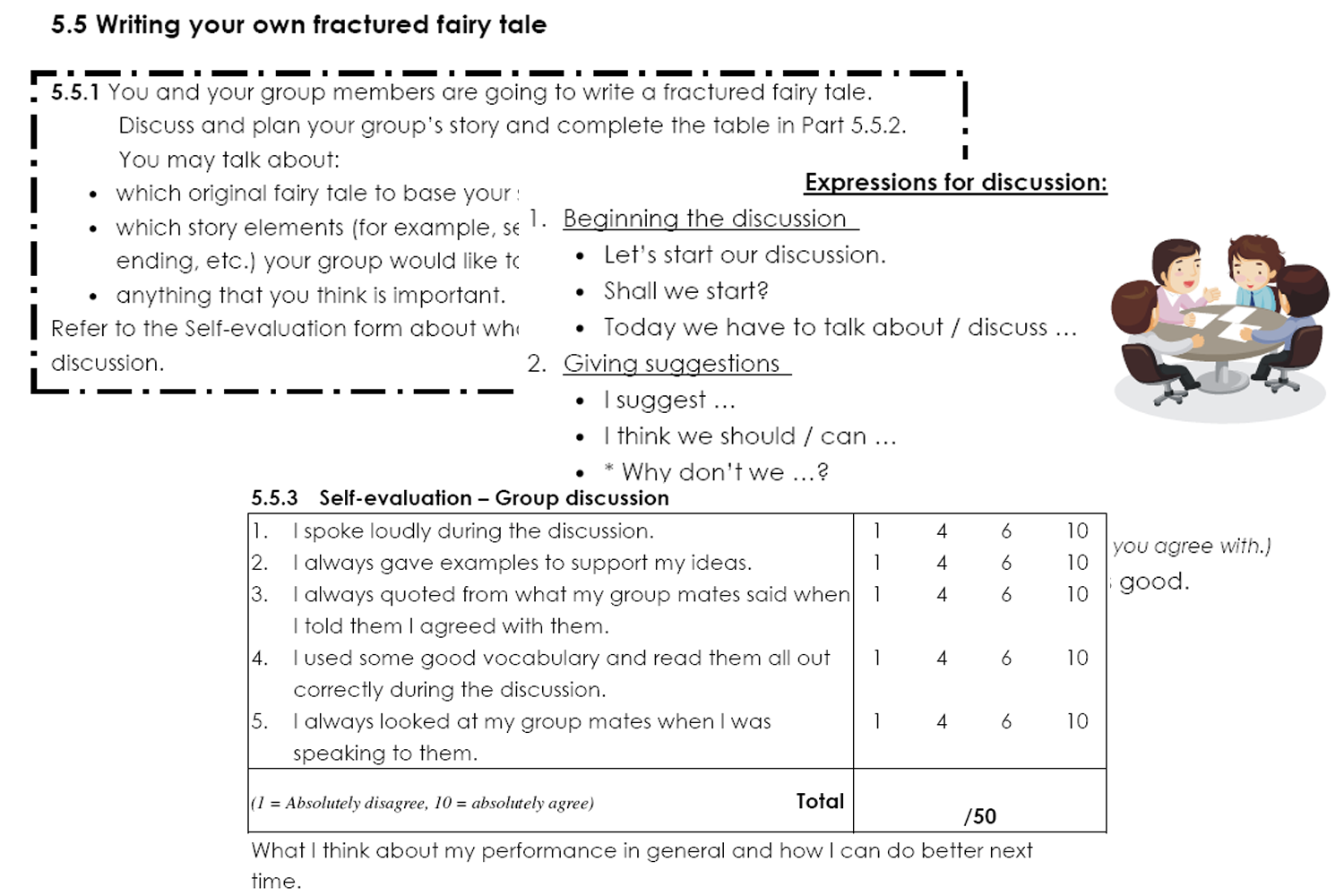
|
Part 4: Short stories appreciation and understanding key features: Science fiction |
Reading:
- Make use of prior knowledge to understand the plot
- Infer word meaning from context
- Make predictions
- Understand the connection between ideas by following pronoun references
Vocabulary:
- Use vocabulary specific to the science fiction genre
- Describe personality of characters with adjectives
Short stories:
- Create a setting for a science fiction
- Be aware of the techniques writers use to create convincing characters
SBA/Speaking:
- Include an appropriate introduction & a conclusion in an oral presentations
- Provide details that support an opinion
- Use appropriate signposting to organise ideas in presentations
- Present relevant ideas clearly with effective use of a note card
- Sustain and extend a conversational exchange by referring to others’ ideas when agreeing and disagreeing with them during discussions
|
Students conducted a presentation on their favourite character in a Sci-fi movie.
|
Explicit teaching of inferring word meaning from context |
|
|
|


|
Part 5: Short stories appreciation and understanding key features: Horror stories |
Reading:
- Identify the mood of literary works through recognising key words and making inferences
- Infer word meaning from context
- Make predictions
Vocabulary:
- Describe settings and moods with appropriate adjectives
- Use vocabulary specific to horror stories
Short stories/SBA/Speaking:
- Give a brief summary of a story
- Recognise tools writers use to create mood: strong verbs, imagery & dramatic images (similes, metaphors, personification)
- Express opinions on writer’s effectiveness in creating the setting and mood in stories
- Create the mood of a story using appropriate adjectives & imagery
- Use similes, metaphors & personification in the description of a place/person
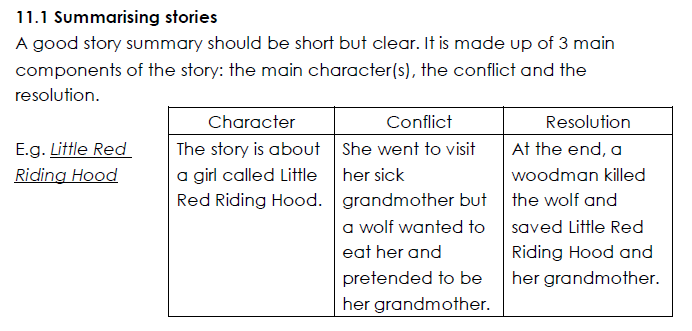
|
Students created and presented their module story.
|
|
Students expressing their opinions on a story they read in a discussion in class |
|

